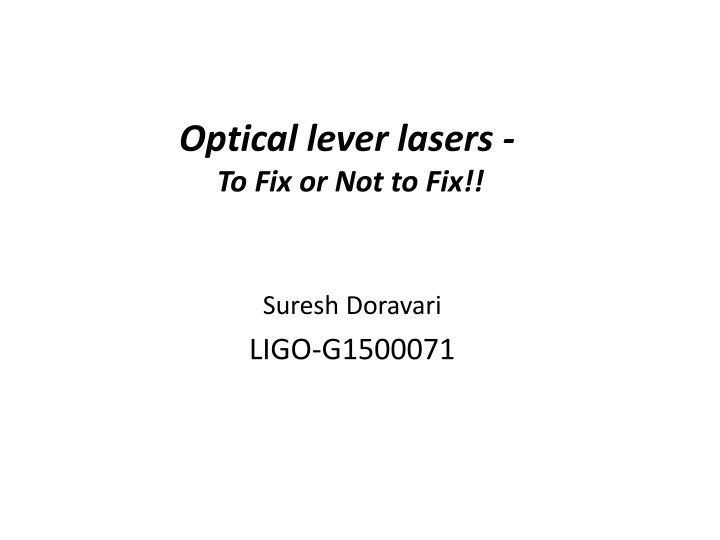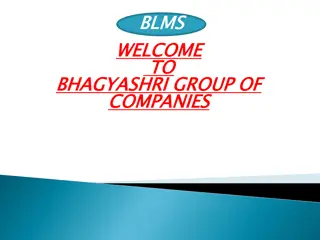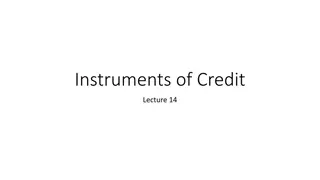Enhancing Laser Performance for Precision Instruments
Explore the comparison between diode lasers and He-Ne lasers for optical lever systems, discussing the need for better performance, methods to achieve it, and the impact on precision instruments in challenging environmental conditions.
Uploaded on Sep 27, 2024 | 1 Views
Download Presentation

Please find below an Image/Link to download the presentation.
The content on the website is provided AS IS for your information and personal use only. It may not be sold, licensed, or shared on other websites without obtaining consent from the author.If you encounter any issues during the download, it is possible that the publisher has removed the file from their server.
You are allowed to download the files provided on this website for personal or commercial use, subject to the condition that they are used lawfully. All files are the property of their respective owners.
The content on the website is provided AS IS for your information and personal use only. It may not be sold, licensed, or shared on other websites without obtaining consent from the author.
E N D
Presentation Transcript
Optical lever lasers - To Fix or Not to Fix!! Suresh Doravari LIGO-G1500071
Optical Lever Lasers - To fix or not to fix! 1. What do we mean by better performance? 2. Do we need better performance? 3. How do we obtain better performance? 4. A comparison of diode lasers and HeNe lasers 5. Options ahead of us 6. A possible plan of action
Our current oplev lasers can perform ten times better Oplev laser power fluctuations : factory spec RIN is 1% , after the fix < 0.1%
Lower noise across the entire spectrum by an order of magnitude
Do we need better performance? School One The oplevs are used to obtain lock and then the control is transferred to wavefront sensors. So glitchy lasers are okay. School Two When the weather gets bad High wind conditions in LHO Storms in LLO We will need to engage oplev damping even during lock. Even obtaining lock may be difficult if the oplev noise is high. So we do need lasers which do not glitch.
How can we obtain better performance? A. Fix the ones we have 1. Tweak alignment to reduce optical feed back 2. Tweak operating temperature set point 3. Choose power level for glitch free operation 4. Reduce fan speed 5. Passive thermal shielding B. Replace them with 1. Better diode lasers I. Get the present supplier to deliver glitch free lasers II. Source from Thorlabs or another such standard company (will require some local tuning for glitch free operation) 2. He-Ne lasers I. Fiber fed He-Ne laser with stabilisation
Options ahead of us 1. Do nothing and live with the current glitchy lasers 2. Train the current supplier to build glitch free lasers 3. Obtain better engineered diode lasers another well established supplier (Thorlabs for eg.) and tune them for glitch free performance our selves 4. Switch over to He-Ne lasers (either fiber coupled or free space) and do the work needed to stabilize them
A plan of action 1. Fix the diode lasers currently with us and use them till their end-of- life (at least two years) 2. In the mean time explore and test other vendors and lasers 1. Diode lasers from Thorlabs 2. Stabilised HeNe Lasers with fibers couplers from Newport (Both these will require some in-house work for stable operation) 3. In a couple of years time replace the diode lasers as they die with the new solution























